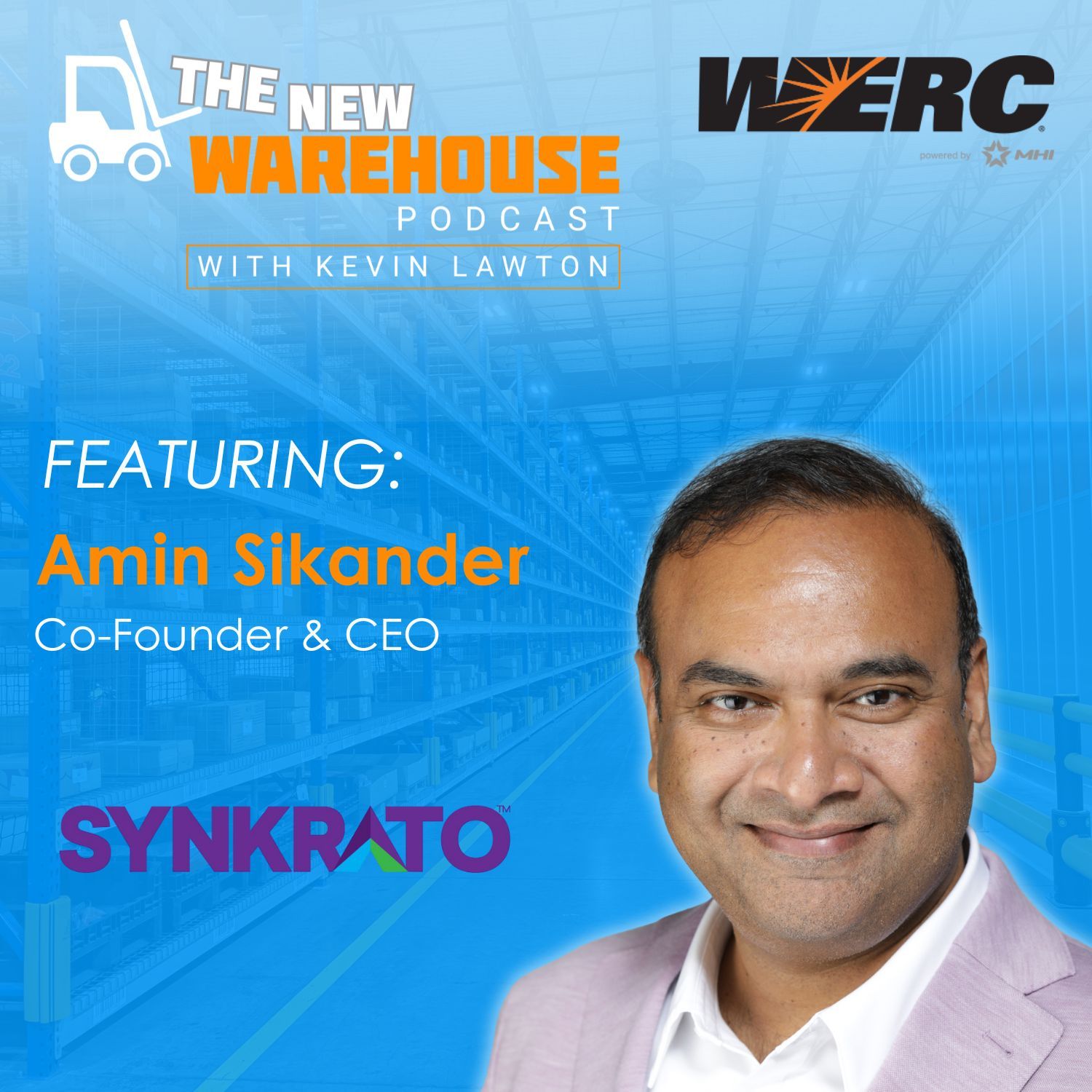
Live from WERC: Synkrato is Changing Warehousing from the Ground Up with AI
This episode of The New Warehouse podcast comes to you on site at the 2025 Warehousing Education and Research Council (WERC) conference in New Orleans. Amin Sikander, founder and CEO of Synkrato, joined the show to unpack how artificial intelligence is reshaping warehouse operations.
With more than 30 years of experience building and implementing logistics systems, Sikander is now focused on AI-powered tools that help warehouses make smarter decisions in real time. Synkrato’s platform builds upon the current infrastructure to deliver dynamic optimization, simulation, and actionable insights.
Data, Not Tribal Knowledge, Is the New Advantage
Many warehouses still rely on tribal knowledge, gut instinct, floor experience, and decades of manual tweaks. That’s a problem, especially when demand surges, systems age, and customer expectations continue to rise. Sikander points out that even companies with warehouse management systems (WMS) often rely more on luck than logic. “There are so many configurations and flags that you need to turn on, and you’d better hope and pray you get the right consultant,” he said, noting that these systems are built for how businesses operate at one moment in time. But as we all know, operations aren’t static.
The pace of change in warehousing demands real-time adaptability. Synkrato’s AI can sit on top of these existing systems, learn from live data, and recommend daily adjustments to improve throughput, space utilization, and labor efficiency. “Our businesses are not static. They change all the time,” he said, explaining that Synkrato’s AI can simulate different approaches and optimize based on today’s constraints, not last year’s assumptions.
AI Simulation Is the New Warehouse Playbook
One of the most compelling applications of AI is in simulation—specifically, using digital twins to model warehouse operations in a virtual environment. This lets managers test ideas without making costly physical changes. “Let’s say you’re Iron Man and you’re battling Thanos, and nothing’s working,” Sikander explained. “But then there’s Doctor Strange. He’s running through every possible combination in the multiverse. That’s what AI can do.” Synkrato creates digital replicas of warehouse environments and feeds in ERP data to simulate potential changes. A manager wondering whether a new automation system will improve operations or bottleneck them can get a predictive answer before spending a dollar.
These simulations can cover everything from staffing to equipment to space layout. “Now we can do simulations to come back and give you answers to pretty much any question you can ask in the warehousing world,” Sikander said. It’s not just about picking efficiency or faster replenishment—it’s about understanding trade-offs across the whole operation. “Warehousing to an extent is about compromises,” he said. “Every solution has its cost. Looking at systems in isolation is not effective.”
AI for Everyone, Not Just the Big Guys
While automation often requires a certain scale to justify investment, AI doesn’t. According to Sikander, Synkrato works with Fortune 50 companies and small operations alike. “We have customers that have 30,000 square feet or less,” he noted. The goal isn’t to rip and replace but to enhance existing systems with an intelligent layer. “Use AI to make your existing systems better. Build a layer on top,” he advised. Even warehouse workers on the floor benefit directly. For example, continuous slotting powered by AI can dramatically reduce walking time during picking—sometimes by 50% or more.
AI also gives operations the ability to adapt, rather than react. When demand spikes or processes break down, decisions often come too late. “By the time you can analyze and get to an answer, it’s too late,” he said. “You needed that answer three days ago.” Looking ahead, he sees AI pushing the industry toward new kinds of roles. The warehouse worker of tomorrow, he says, might look more like a controller or a robotics operator. “I would like the future warehouse worker to look more like a video game developer,” he said.
Key Takeaways from Synkrato
- Warehouses still rely heavily on tribal knowledge, even with modern WMS tools in place.
- AI adds value by continuously optimizing processes based on current data, not static system settings.
- Digital twins enable simulation of decisions (e.g., new automation or layout changes) before investing capital.
- Synkrato’s AI platform works with both large-scale enterprises and smaller operations under 30,000 sq. ft.
- Continuous slotting and dynamic labor modeling can reduce travel distance and boost productivity.
- AI adoption doesn’t require system replacement—it enhances what you already have.
- Frontline workers also benefit from these tools, which reduce effort and improve productivity.
Companies that don’t invest in AI will likely struggle to stay competitive in the next 5–10 years.
Listen to the episode below and leave your thoughts in the comments.
To Learn More About Synkrato
Website: Synkrato
Connect with Amin Sikander on LinkedIn
Follow Synkrato on LinkedIn
For more warehouse solutions like Synkrato, check out the podcasts below.
579: The Journey to Sustainable Warehousing, Insights from ProMat 2025
474: AI for Warehousing with Powerhouse AI
471: A Deep Dive into AI in Warehousing with Standard Insights’ Jerry Abiog

Voice AI in Warehousing: Applications Driving Safety and Efficiency
[…] Live from WERC: Synkrato is Changing Warehousing from the Ground Up with AI […]